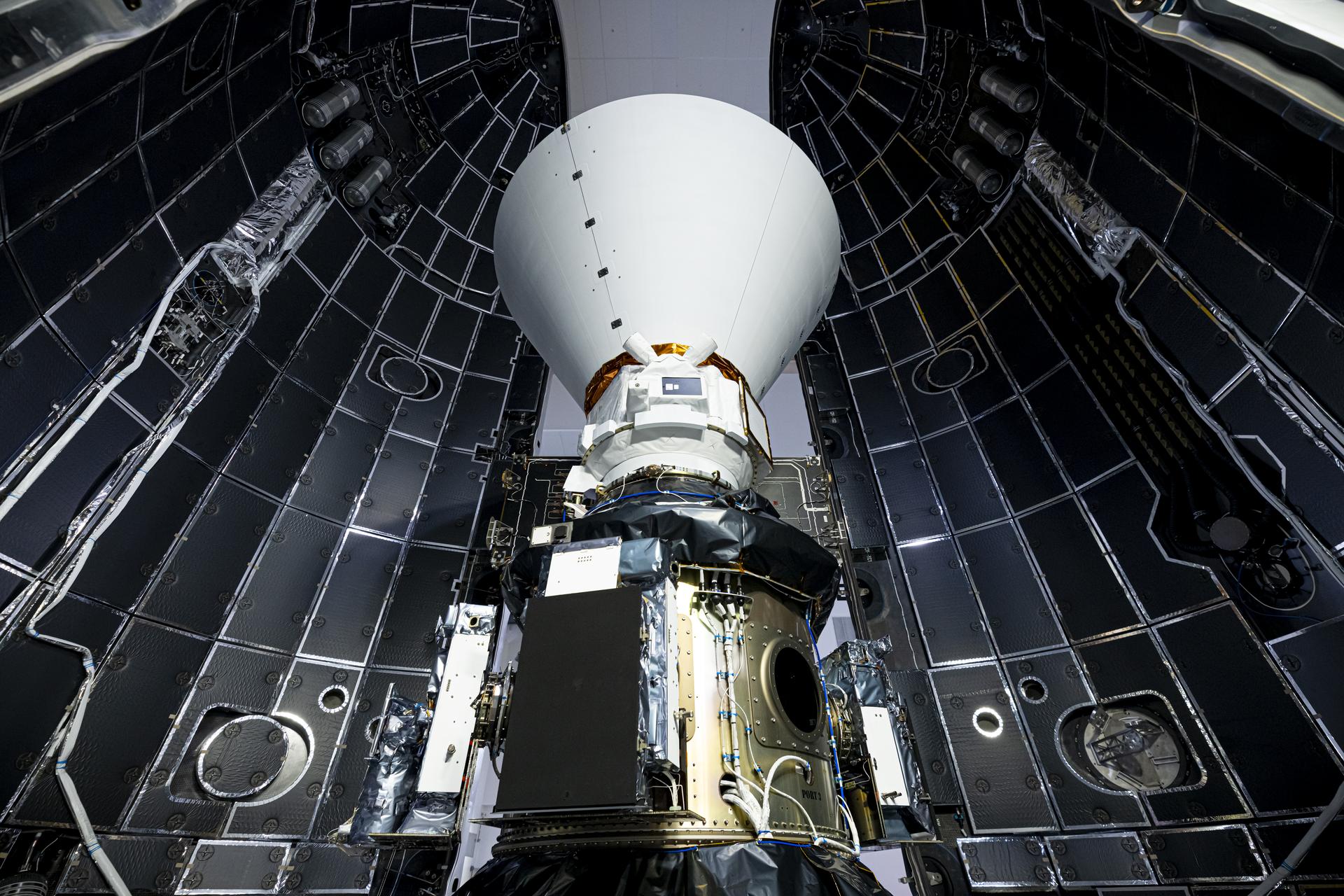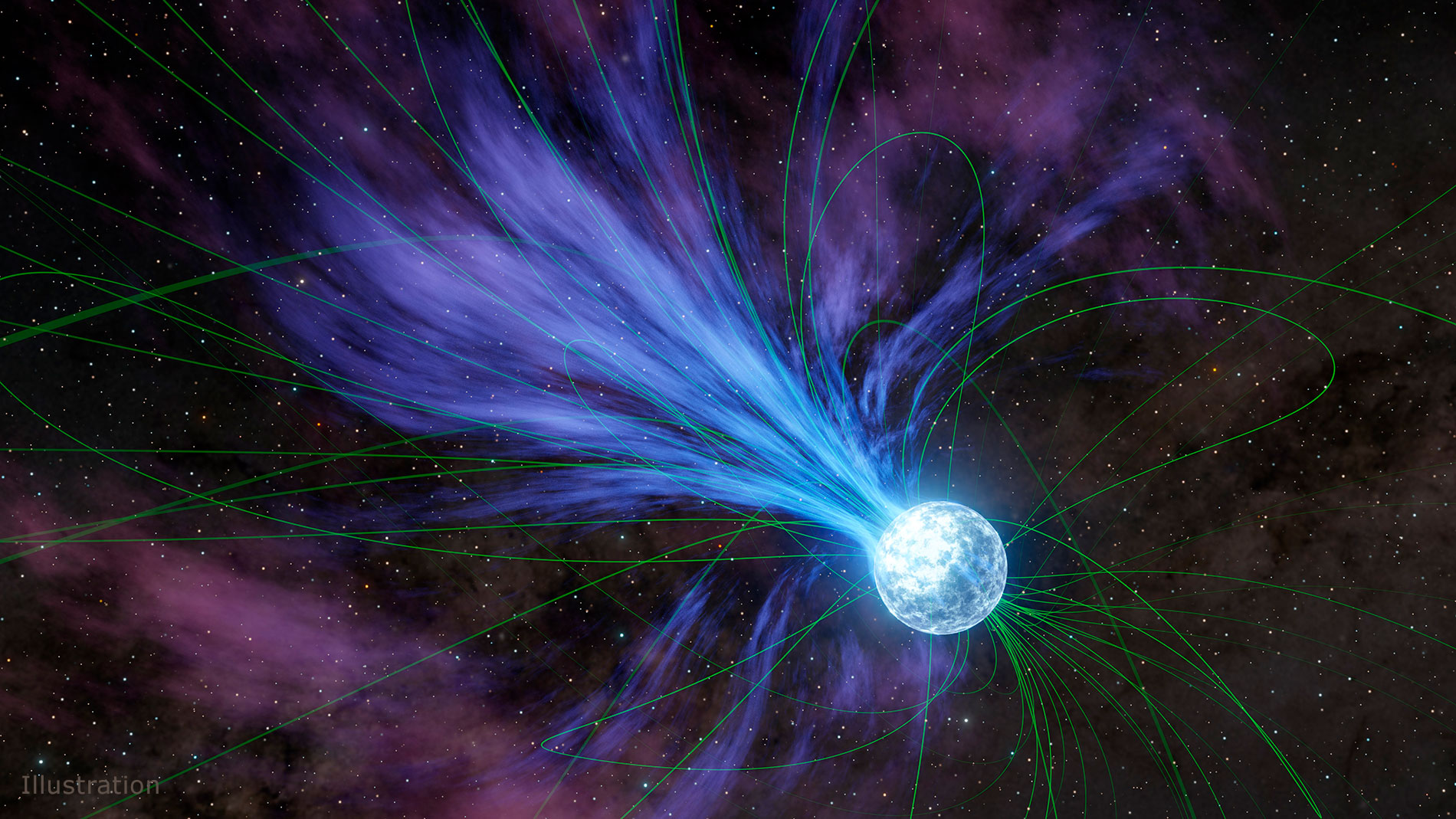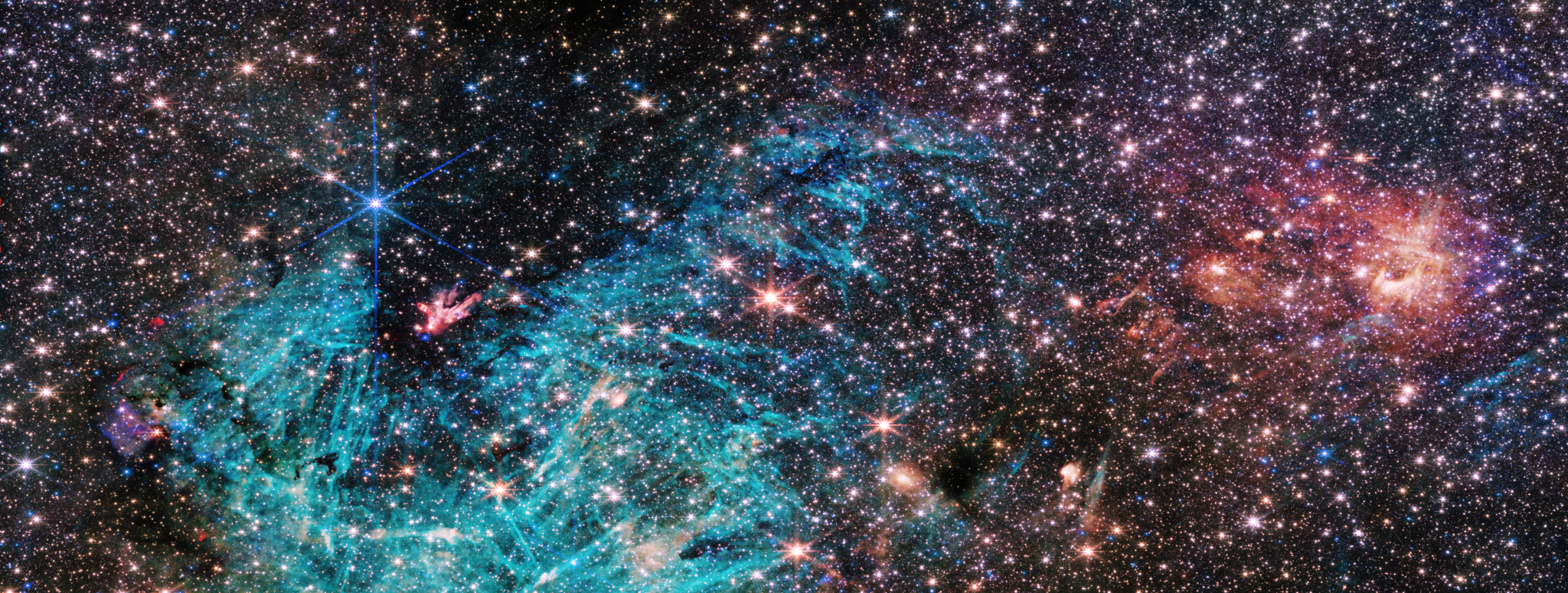6 min read Preparations for Next Moonwalk Simulations Underway (and Underwater) Ahead of launch, NASA’s SPHEREx is enclosed in a payload fairing at Vandenberg Space Force Base on March 2. The observatory is stacked atop the four small satellites that make up the agency’s PUNCH mission. NASA/BAE Systems/Benjamin Fry NASA’s latest space observatory is targeting a March 8 liftoff, and the agency’s PUNCH heliophysics mission is sharing a ride. Here’s what to expect during launch and beyond. In a little over a day, NASA’s SPHEREx space telescope is slated to…
Read MoreTag: The Milky Way
NASA Telescopes Find New Clues About Mysterious Deep Space Signals
6 min read Preparations for Next Moonwalk Simulations Underway (and Underwater) In an ejection that would have caused its rotation to slow, a magnetar is depicted losing material into space in this artist’s concept. The magnetar’s strong, twisted magnetic field lines (shown in green) can influence the flow of electrically charged material from the object, which is a type of neutron star. NASA/JPL-Caltech Using two of the agency’s X-ray telescopes, researchers were able to zoom in on a dead star’s erratic behavior as it released a bright, brief burst of…
Read MoreSeeing Sagittarius C in a New Light
The NIRCam (Near-Infrared Camera) instrument on NASA’s James Webb Space Telescope’s reveals a portion of the Milky Way’s dense core in a new light. An estimated 500,000 stars shine in this image of the Sagittarius C (Sgr C) region, along with some as-yet unidentified features. A large region of ionized hydrogen, shown in cyan, contains intriguing needle-like structures that lack any uniform orientation. NASA, ESA, CSA, STScI, and S. Crowe (University of Virginia) A star-forming region, named Sagittarius C (Sgr C), is seen in exceptional detail in this image from…
Read More

